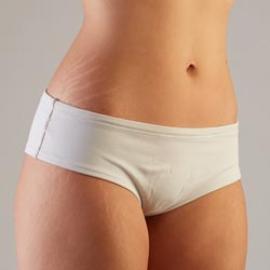
Legs weighed down by fat deposits are always an inconvenience when we have to wear a swimsuit at the beach or shorts at the gym. There is sometimes so much shame or embarrassment that skirts or shorts are tossed into the back of the closet. We know that slimming down your legs or losing your thighs to reshape your silhouette remains challenging, even with a healthy lifestyle. It's often discouraging. Luckily, aesthetic medicine has simple solutions that allow you to recover thin thighs and slim legs. Find out how to lose leg cellulite with Cellfina ® or slim calves by Coolsculpting ®.
The causes: why do your legs get fat?
The appearance of fat bulges on the legs can occur at any age, often with a cumulative effect. Genetic, hormonal, individual and dietary factors contribute to this. In women, the gynoid distribution of adipocytes means that the number of adipocytes is higher in the lower parts of the body, such as the hips, buttocks or legs. In men, the distribution of the android encourages fat deposits on the upper body, but the legs may also become heavier.
Fat accumulation occurs in specialized cells with a slower metabolism, adipocytes. It is a long-term reserve, which explains why it is difficult to lose weight, particularly in a given area. While the number of adipocytes is fixed from adulthood, each cell can multiply its volume by 50: this is what gives rise to fat bulges.
These adipocytes can be arranged into fat bulges (hypertrophied cells) or cellulite, also known as lipodystrophy (fatty hypertrophy of the cells and water retention outside the cells). Due to hormonal causes, cellulite of the thighs or legs occurs more often in women than in men, with 3 degrees of severity: aqueous cellulite, where oedema predominates; fat cellulite, where excess fat predominates; fibrous cellulite, where fat bulges are trapped by fibrous septa, putting fat under tension.
Indications: who can slim his legs down without surgery?
In addition to saddlebags, slimming legs may impact several areas: the thighs, the knees, the calves and sometimes the legs. Let us remember that anatomically, the legs refer to the calves, but in the popular sense it is the part going from the hips to the feet.
Before slimming down your legs, your esthetic consultant at the Clinique des Champs Elysées must make a diagnosis.
Indeed, other factors may affect the leg, without necessarily having excess fat deposits. Your slimming specialist will specifically evaluate your legs in three aspects:
- Verify that the heaviness is due to excess fat, not edema, heavy legs or venous insufficiency.
- Determine the type of fatty tissue, whether or not there is cellulite, bearing in mind that fibrous cellulite requires specific treatment.
- Check your skin's health (tone, elasticity, firmness) to see if your skin can reshape spontaneously after thinning the area. Surgery is sometimes the only answer for significant excess fat or skin (liposuction and thigh lift).
Effective remedies to heavy legs
The technical platform of the Clinique des Champs-Elysées is really comprehensive, with the most efficient devices for slimming down the legs:
- To fix moderate excess fat or edematous cellulite, your aesthetic doctor can use very delicate techniques such as IPL lamp or draining mesotherapy.
- Cryolipolysis is used to remove localized excess lipid associated with the quality of the skin, which in one session destroys 25 to 30 percent of the leg fat in the treated area.
- Lipolysis and dermal remodeling can be combined with a controlled heat source to reduce leg fat on altered skin (electromagnetic waves, radiofrequency, focused ultrasound). These high-energy waves can work on adipose cellulite, incorporating leg thinning and orange peel skin lift.
- In the case of fibrous cellulite, your practitioner will specifically target the fibrous bulge walls to regain a thin, slim and shapely leg.




















































